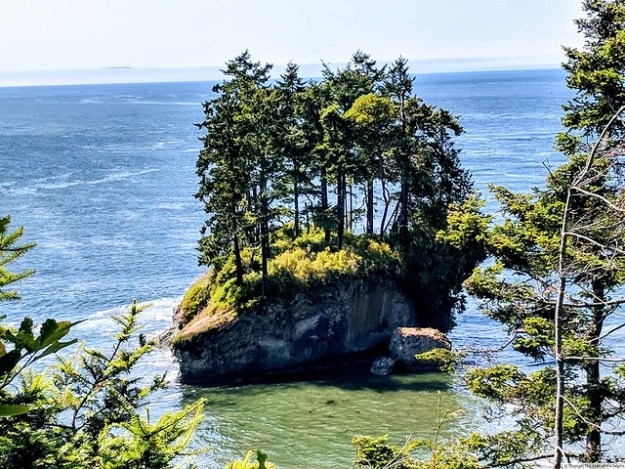Continuing our stay at the Ventura County beach park, on Wednesday we drove to Santa Barbara to look around the town. Our first stop was at the Reagan Ranch Center. 

The Center, called the “schoolhouse for Reaganism, is a Young America’s Foundation Center dedicated to Ronald Reagan. 
There are exhibits about Reagan as well as rooms for lectures, conferences, events related to the conservative movement and a replica of his library at the ranch. 

The Center is free and we were given a tour by a Center docent. We saw a movie about President Reagan’s presidency, policies and life at his nearby ranch. The Reagan ranch, Rancho del Cielo (Ranch of Heaven) is not open to the public. 

During his presidency the ranch became the Western White House. He loved spending time there chopping wood, clearing brush, chopping up telephone poles for fences, riding horses and reading in the evenings by the hearth. Reagan loved the ranch, the land and all it represented. 

The Center has a chapel room with President Reagan’s favorite verse printed on the wall. This was was his mother’s favorite verse, the verse he mentioned during his inaugural address in 1981, and the family Bible was open to this verse when he took his oath of office. His mother, Nelle, had written in the Bible beside the verse, ‘A wonderful verse for the healing of a nation”. 
We saw Reagan’s riding boots, a piece of the Berlin Wall, his jeep given by Mrs. Reagan for his birthday in 1983 and one of his saddles.



It was hard to get pictures at the Center because of glare from the museum lights. (An example is the picture of his boots where it looks like the top of one boot is missing due to bad glare). 



Next up was the Moreton Bay Fig tree, the largest fig tree in the United States. A seaman visiting Santa Barbara in 1876 gave an Australian Moreton Bay fig tree seedling to a local girl who planted it. 

Last we toured the Santa Barbara County Courthouse, without a doubt the most beautiful courthouse we have ever visited. It was completed in 1929 after the first courthouse was destroyed by an earthquake. It is a Spanish Colonial Revival style architecture and the Spanish influence is everywhere. 
The courthouse is composed of four buildings with red tile roofs, a four faced clock tower, beautiful arches and a sunken garden. On the grounds are plants and trees from 25 countries. You enter the main building and see wrought iron chandeliers and railings and colorfully tiled floors. Even the walls around the water fountains are tiled as well as the elevator doors. 

Our favorite room was the mural room with hand-painted murals. 



Bill did a panoramic shot of the room. If you click on the image and then again the arrow and move the picture (up/down/left/right) with your fingers, hopefully you can see around the room. Click this link to see panorama interactive image
In the clock tower we had gorgeous views of Santa Barbara. At each of the four corners was a display showing us what we were looking at. 



On the way back down the stairs we passed the Bisno Schall Clock Gallery where we could see the mechanism of the huge clock installed in 1929 and still keeping time on the four faces outside. 
What a great day, and we were pleased that none of the places we visited today charged a fee and Santa Barbara provides plenty of free parking. The only annoying part of the day was the rush hour traffic jam we got in on US 101 on the way home.
We really enjoyed our time on the beach in Ventura watching the surfers, viewing the amazing sunsets and going to sleep each night to the sound of crashing waves.
Next up: lots of fun things in the Los Angeles area





































































































































































































































